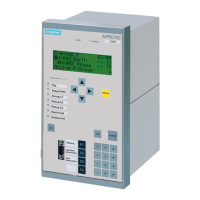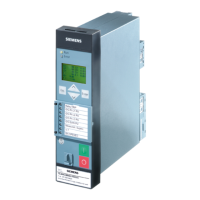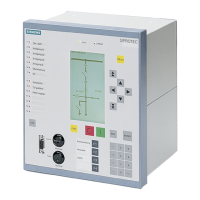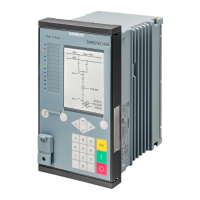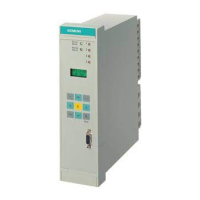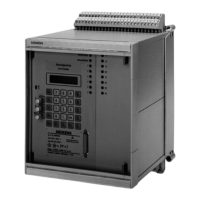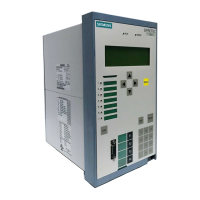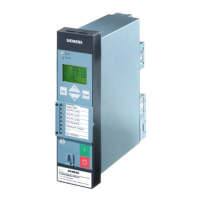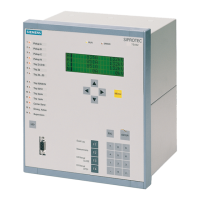2 Functions
224
7SD610 Manual
C53000-G1176-C145-4
The line energization detection enables the time-overcurrent protection and high-
current switch onto fault protection to trip without delay after energization of their line
was detected.
2.16.1.2 Detection of the Circuit Breaker Position
For Protection
Purposes
Information regarding the circuit breaker position is required by various protective and
supplementary functions to ensure their optimal functionality. This is, for example, of
assistance for
• The high-current instantaneous tripping (refer to Section 2.8 ),
• The circuit breaker failure protection (refer to Section 2.13),
• Verification of the dropout condition for the trip command (see Section „Terminating
the Trip Signal“).
The device is equipped with a circuit breaker position logic (Figure 2-98) which offers
different options depending on the type of auxiliary contacts provided by the circuit
breaker and on how they are connected to the device.
In most cases it is sufficient to signal the position of the circuit breaker to the device
with its auxiliary contact via a binary input. This always applies if the circuit breaker is
only switched three-pole. Then the NO auxiliary contact of the circuit breaker is con-
nected to a binary input which must be configured to the input function„>CB 3p
Closed“ (No. 379). The other inputs are then not used and the logic is basically re-
stricted to simply passing on this input information.
If the circuit breaker poles can be switched individually, and only a parallel connection
of the NO individual pole auxiliary contacts is available, the relevant binary input (BI)
is allocated to the function „>CB 3p Open“ (no. 380). The remaining inputs are not
used in this case.
If the circuit breaker poles can be switched individually and if the individual auxiliary
contacts are available, an individual binary input should be used for each auxiliary
contact if this is possible and if the device can and is to trip single-pole. With this con-
figuration, the device can process the maximum amount of information. Three binary
inputs are used for this purpose:
• „>CB Aux. L1“ (No. 351) for the auxiliary contact of pole L1,
• „>CB Aux. L2“ (No. 352) for the auxiliary contact of pole L2,
• „>CB Aux. L3“ (No. 353) for the auxiliary contact of pole L3.
The inputs No. 379 and No. 380 are not used in this case.
If the circuit breaker can be switched individually, two binary inputs are sufficient if both
the parallel as well as series connection of the auxiliary contacts of the three poles are
available. In this case, the parallel connection of the auxiliary contacts is routed to the
input function „>CB 3p Closed“ (No. 379) and the series connection is routed to the
input function „>CB 3p Open“ (No. 380).
Please note that Figure 2-98 shows the complete logic for all connection alternatives.
For each particular application, only a portion of the inputs is used as described above.
The eight output signals of the circuit breaker position logic can be processed by the
individual protective and supplementary functions. The output signals are blocked if
the signals transmitted from the circuit breaker are not plausible: for example, the
circuit breaker cannot be open and closed at the same time. Furthermore, no current
can flow over an open breaker contact.
www . ElectricalPartManuals . com
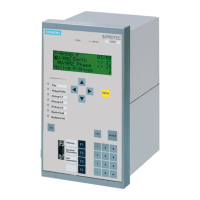
